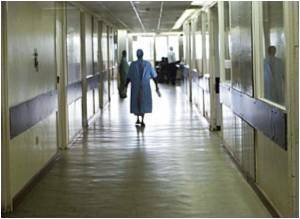Hospitalization rates in New York City for patients with community-acquired methicillin-resistant Staphylococcus aureus tripled between 1997 and 2006, finds study.

During the study period 3,579 people were admitted to New York City hospitals with CA-MRSA. The rate of CA-MRSA increased from 113 people in 1997, a rate of about 1.5 cases per 100,000 people, to 875 admissions in 2006, a rate of 5.3 per 100,000. Overall, about 20 percent of all MRSA hospitalizations over the study period were community acquired, the study found.
"These findings suggest a substantial increase in the rate of hospitalization with community-acquired MRSA in New York City since 1997," said Amanda Farr, MPH, one of the study's authors. This research was done in collaboration between the New York City Department of Health and Mental Hygiene and Columbia University's Mailman School of Public Health.
When compared with other hospitalizations in the study period, researchers noted that men, children, people with diabetes, people with HIV, and the homeless were more likely to be hospitalized with CA-MRSA than the general population. Residents of the Bronx also had substantially higher rates of CA-MRSA hospitalization than those of other New York City boroughs, likely impacted by a lack of access to primary care health services.
The authors speculated at the increased risk associated with these demographics and co-morbidities. Skin infections and sores are common among people with HIV and diabetes and could open the door to MRSA infection. Males and children may be at higher risk because they are more likely to play contact sports, which are associated with an increase risk of spreading bacteria. Persons that are homeless may have limited access to healthcare, as well as have other risk factors such as lack of personal hygiene and sharing personal items in shelter settings.
The findings suggest that public health efforts to curb community-acquired MRSA should be targeted to high-risk groups.
Advertisement
The study reviewed administrative data submitted to New York State Department of Health's Statewide Planning and Research Cooperative System, a reporting system established in 1979 as a result of cooperation between the healthcare industry and government.
Advertisement








